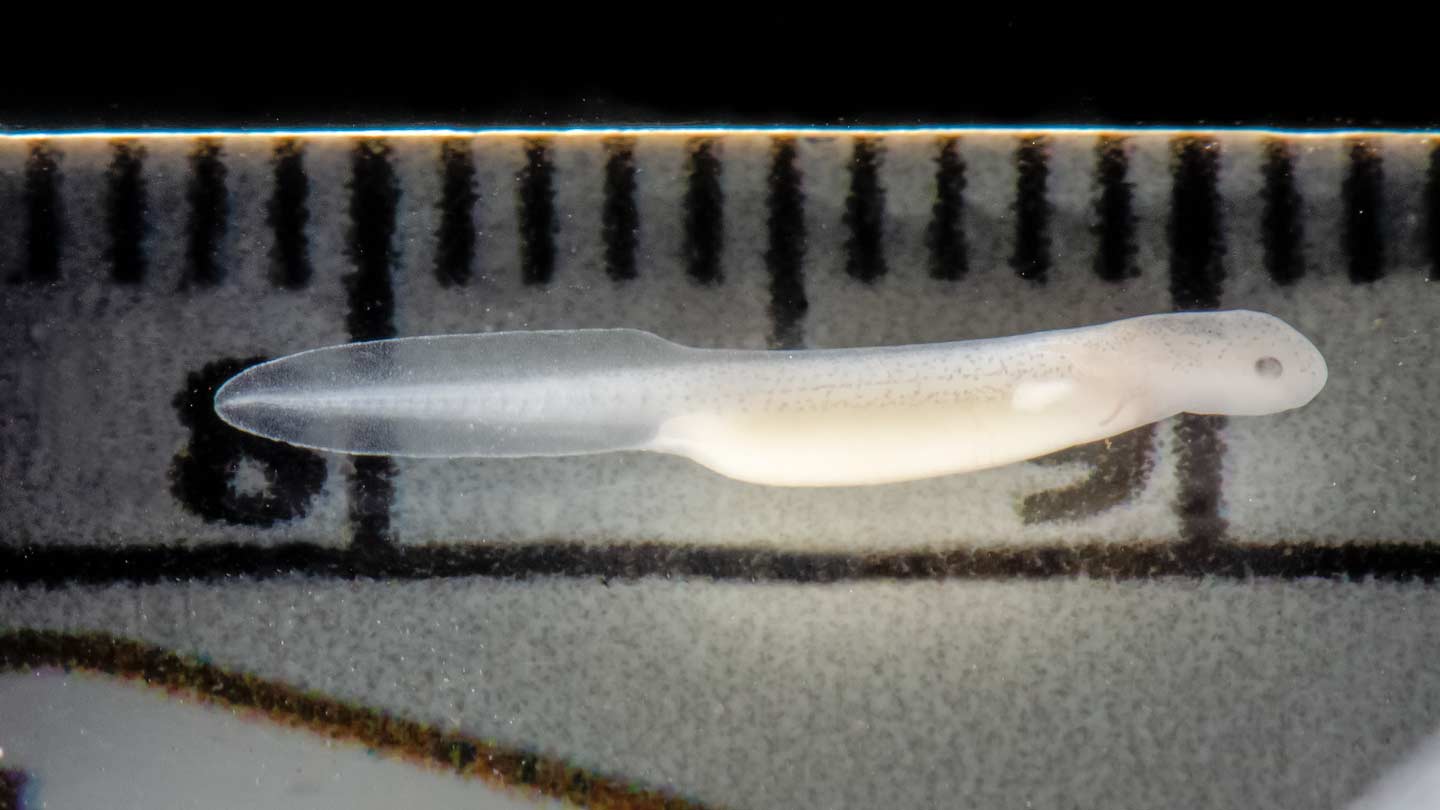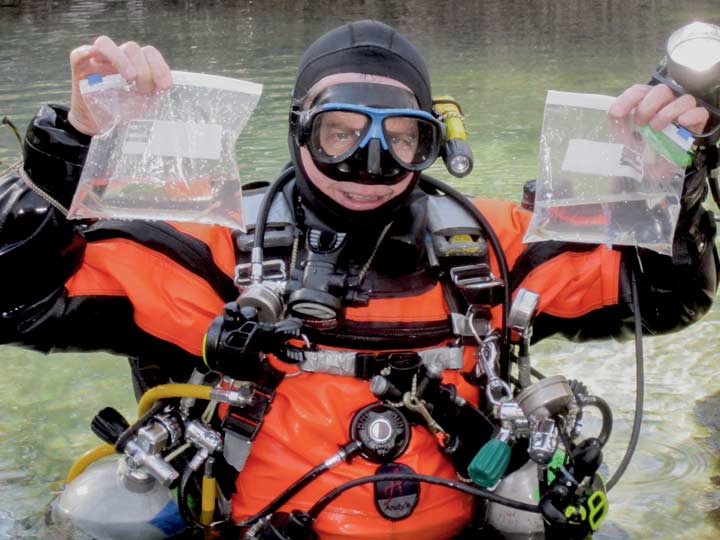
The imperiled Georgia blind salamander (Eurycea wallacei), shown here as a hatchling, was successfully bred for the first time in the labs of the Center for Conservation & Research at San Antonio Zoo.
Danté Fenolio | San Antonio Zoo
Dr. Matthew Niemiller, an assistant professor in the Department of Biological Sciences at The University of Alabama in Huntsville (UAH), is part of a team that has – for the first time ever – successfully bred the imperiled Georgia blind salamander (Eurycea wallacei) in effort to stem the fragile species’ extinction. The secretive salamander inhabits the Floridian Aquifer, a large body of subterranean water below Florida, Georgia and Alabama, and has been considered for candidacy by U.S. Fish and Wildlife Service for the Endangered Species List.
“This is very exciting news, and I am proud to work with such great colleagues and play a minor role in this conservation achievement,” says Dr. Niemiller, an active speleologist who divides his time between the classroom and the field. “This opens new opportunities for research on the development and life history of this enigmatic salamander.”
Dr. Niemiller’s partners in the effort include Dr. Danté Fenolio, vice president of Conservation & Research at San Antonio Zoo and Tim Morrow, president & CEO of San Antonio Zoo, which the 10 newly hatched salamanders call home. Funding for the project was generated by the sale of Conserveza, a beer crafted in collaboration with Freetail Brewing Company to support conservation efforts at San Antonio Zoo.

The salamander can be found in the Floridan Aquifer, a large body of subterranean water below Florida, Georgia and Alabama.
Danté Fenolio | San Antonio Zoo
The initiative kicked off more than a decade ago, when Dr. Fenolio applied for permits with Florida and Georgia to research the Floridan Aquifer’s Georgia blind salamander and its fellow inhabitant, the Dougherty Plain cave crayfish (Cambarus cryptodytes). Once the permits were in hand, he and Dr. Niemiller used a grant from Tree Walkers International to develop captive husbandry and breeding protocols – the same protocols that allowed for the successful breeding of both species at the Center for Conservation & Research earlier this year.
“Our work provides the ‘how to’ guide with regard to keeping and breeding these imperiled groundwater animals,” says Dr. Fenolio. Morrow agrees, adding that the Zoo’s success in this area now allows them to “write the playbook on how to breed these species…that are at risk from disappearing from our planet.” Of course, all three hope that the protocols will never be needed. But if they are, says Dr. Fenolio, “we don’t have to start from scratch if emergency breeding colonies need to be established.”
About San Antonio Zoo
San Antonio Zoo®, operated by San Antonio Zoological Society is a non-profit organization committed to securing a future for wildlife. Through its passion and expertise in animal care, conservation, and education, the zoo’s mission is to inspire its community to love, engage with, act for and protect animals and the places they live.
About Center for Conservation and Research
The Center for Conservation and Research at San Antonio Zoo®, is operated by San Antonio Zoological Society, a non-profit organization committed to securing a future for wildlife through a variety of approaches, including fieldwork, scientific study and husbandry of rare, threatened and endangered species.